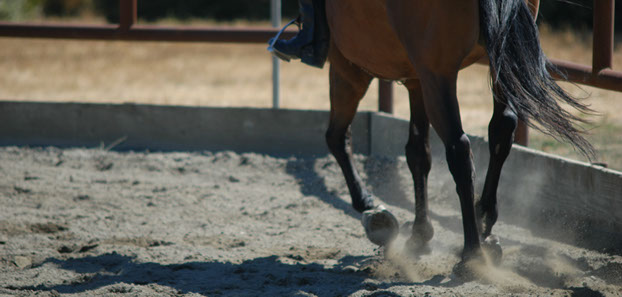Thrush is a bacterial infection of the spongy, triangular shaped part of a horses hoof called the frog.
Thrush can cause great pain to a horse and, if left untreated, can lead to lameness. Other signs of thrush in horses include tenderness in the heel region of the hoof, resistance to having his or her feet picked up and cleaned or inspected, uneven wear of the hoof wall and tattered or cracked frogs. In many cases thrush can also be identified by its pungent smell and dark discharge however, this is not always the case. In fact, many horse owners and vets miss the infection upon inspection.
Thrush is caused by wet, unhygienic stable conditions (although it can also thrive in the hoof in dry conditions – flourishing in tight cracks and deep grooves), poor hoof care, prolonged confinement, overgrown ragged frogs, and long, contracted or high heels which produce deep grooves in the horse’s hoof. It has been suggested that a dietary component may also play a role, as horses on high carbohydrate are often more likely to have thrush.
Thrush can be prevented by good stable management and regular foot care and inspection. It is important to stable your horse in clean, dry conditions and to have his or her feet regularly trimmed and shod to avoid the development of long heel conformation and to keep the frog healthy.
In the case that your horse has thrush, he or she should be moved to a clean, dry area. The foot should be thoroughly cleaned out and the horn pared down to healthy tissue, in order to allow air to reach any remaining damaged tissues. The frog and grooves in the hoof should also be cleaned and scrubbed daily.
There are many products available to help cure thrush however, it has recently been found that a mixture of food grade diatomaceous earth and oregano applied to the cracks and crevices of the hoof can help.
In severe cases, or for more information on how to prevent and cure thrush, please contact your veterinarian.
Image by holisticmonkey



